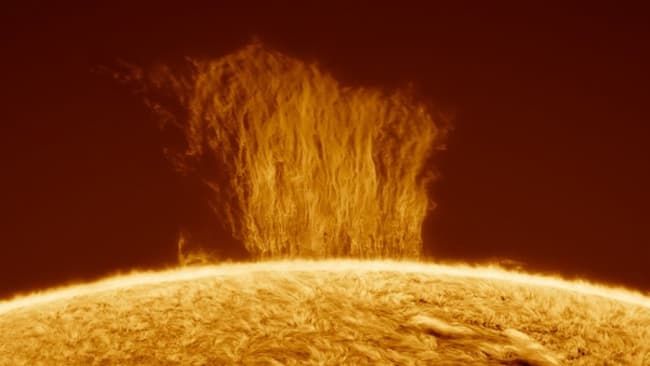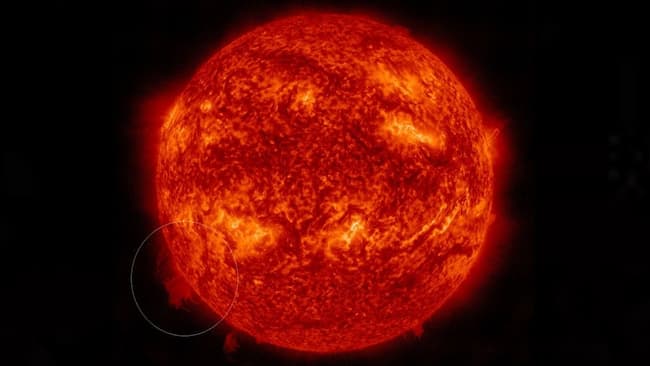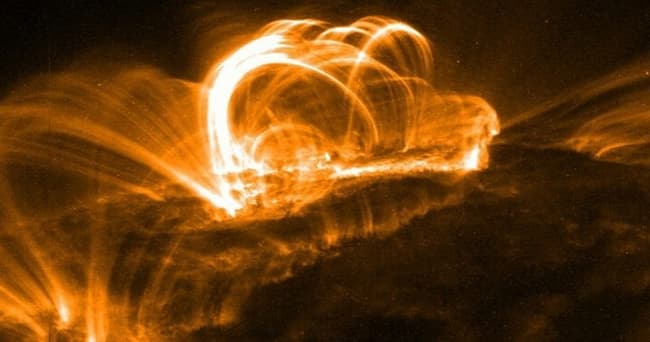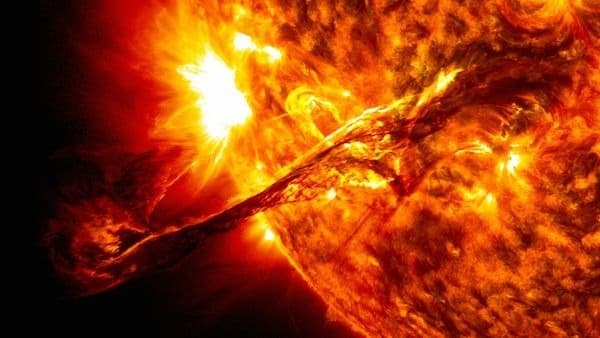The dynamic nature of our Sun never fails to astonish us, with its breathtaking phenomena and celestial displays. Recently, a remarkable event unfolded on the solar surface, as an enormous wall of falling plasma, known as a polar crown

The Captivating Plasma Wall
Eduardo Schaberger Poupeau, an astrophotographer based in Argentina, managed to seize the awe-inspiring moment when a colossal wall of plasma descended toward the solar surface. Poupeau’s photograph, taken on March 9, revealed a plasma wall towering approximately 100,000 km (62,000 miles) above the solar surface—equivalent to the height of eight stacked Earths. The image portrayed numerous threads of plasma gracefully dripping down a celestial wall, evoking a sense of otherworldly beauty.
Unraveling the Polar Crown Prominence
Polar crown prominences (PCPs) represent a captivating variant of solar prominences—loops of ionized gas ejected from the solar surface due to magnetic fields. Unlike regular prominences, PCPs occur near the sun’s magnetic poles, specifically at latitudes between 60 and 70 degrees North and South. The intense magnetic fields near the poles cause these prominences to collapse back toward the Sun, earning them the poetic nickname “plasma waterfalls.”

The Puzzle of Fast-falling Plasma
Although the plasma within PCPs remains confined within the magnetic field that propelled it, scientists are intrigued by its rapid descent. Observations have indicated that the plasma falls at speeds exceeding 22,370 mph (36,000 km/h), surpassing the theoretical limits calculated based on magnetic fields. Researchers are actively working to unravel this enigma and comprehend the mechanisms enabling such accelerated descent.

Phases of PCP Eruptions
A study published in the journal Frontiers in Physics shed light on the eruptive behavior of PCPs. It revealed a two-phase process: a slow phase, where plasma ascends gradually, and a fast phase, characterized by accelerated plasma movement toward its altitude peak. It is plausible that these distinct phases influence the manner in which plasma returns to the solar surface. Further investigations are essential to gain a comprehensive understanding of this phenomenon.
Scientific Significance and Future Perspectives
Solar physicists are deeply interested in studying solar prominences due to their potential association with coronal mass ejections (CMEs)—massive magnetized plasma plumes that can disengage from the Sun and impact Earth. PCPs, with their distinctive behavior, also attract the attention of nuclear physicists. The Sun’s magnetic field, particularly adept at containing plasma loops in polar regions, may provide valuable insights for improving experimental nuclear fusion reactors.

Frequent Marvels and Solar Cycle Impact
PCPs, although relatively common, are rarely captured in images like the one immortalized by Poupeau. However, these plasma-related solar phenomena may become more frequent and intense during the Sun’s 11-year solar cycle, particularly during the solar maximum—the peak of solar activity. Recent events, such as the entrapment of a massive solar prominence in a polar vortex and the eruption of a colossal plasma plume, underscore the unpredictable and captivating nature of our nearest star.

